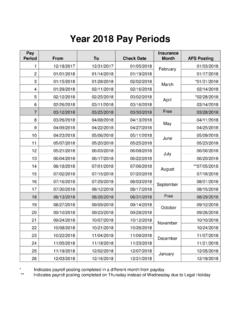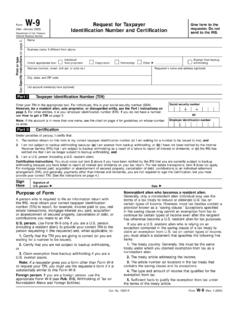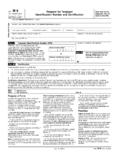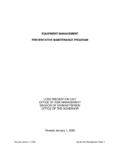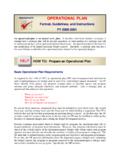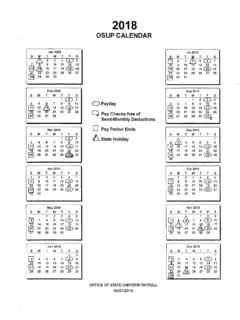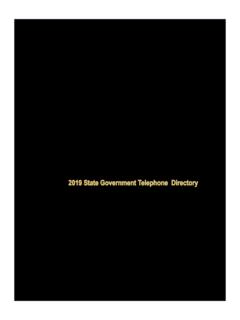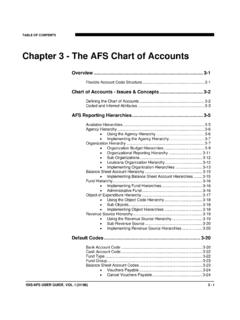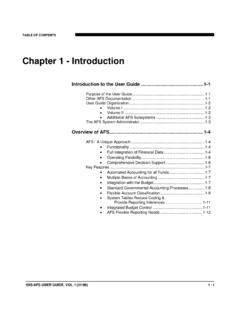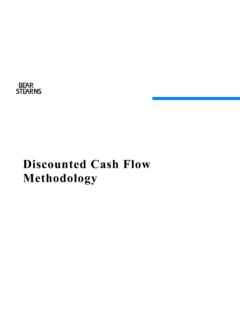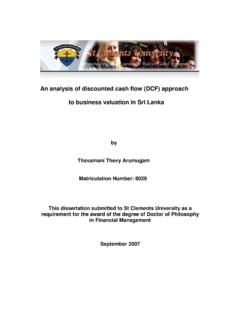Transcription of GASB STATEMENT 34 IMPLEMENTATION ISSUE - …
1 G:\mrhodes\slabs\depreciation & major renovations GASB STATEMENT 34 IMPLEMENTATION ISSUE SLABS Major renovations and depreciation ISSUE To determine how to account for and depreciate major renovations and improvements to buildings in SLABS. Background With the IMPLEMENTATION of GASB 34, buildings with acquisition cost of $100,000 or more are required to be capitalized and depreciated in Louisiana over 40 years. Improvements or renovations to these buildings will be capitalized if they amount to $100,000 or more and depreciated over 40 years as well. Problem How should renovations or improvements be handled for depreciation purposes?
2 Last year, the 2001 State Land and Buildings System (SLABS) Inventory report as of 6/30/01 was compared to the 2000 SLABS Inventory Report. Any additions to the 2000 SLABS inventory report, over $100,000, was treated as a new asset and given a useful life of 40 years. Also, the Change Report for 2001 was used to establish the additions and deletions. An Excel spreadsheet was created to account for the depreciation (see attached). The Excel spreadsheet did not equal the total value of the SLABS Inventory Report because the spreadsheet only tracks buildings for 40 years. The SLABS Inventory Report list all of the buildings in the state with an Actual cost of $100,000 or more.
3 Alternatives According to the textbook, Intermediate Accounting, by Hartman, Harper, Knoblette, and Reckers, there are three methods used to account for improvements or renovations: 1) Reduction of accumulated depreciation Reduction of the accumulated depreciation account is appropriate when the expenditure extends the useful life of the old asset. Accumulated depreciation is reduced by the purchase price or cost of the major renovation; thereby, raising the carrying value of the asset by the same amount. The depreciable life should be extended by the same amount as the economic life is increased.
4 2) Establish a new asset account A separate asset account can be established for each major component or major renovation and depreciated separately. The textbook states that major components of buildings can be handled in this manner if the components can be separately identified. The main structure of the building has a different life from the roof, the heating and cooling system, or the elevator. If the components can be determined, each component can be treated as a separate asset for valuation and allocation purposes. g:\mrhodes\slabs\depreciation & major renovations 3) Increase the old asset account The expenditure amount is capitalized in the old asset account if a component cost cannot be identified, and if the expenditure does not necessarily increase the asset life.
5 If the asset life is increased, the accumulated depreciation account is reduced. The net effect is the same: the book value of the asset is increased. Discussion and Examples of Alternatives 1) Reduction of accumulated depreciation - SLABS will allow you to add cost to a building for major renovations or improvements, but it will not keep these costs separate. If we used this method, we would have to add a new column to the Excel spreadsheet: Building ID and track depreciation by building. If there was a renovation to a building, we would reduce the accumulated depreciation for the building by the cost of the renovation.
6 Also, Using this method, the actual cost in SLABS would not equal the cost of the building on the Excel spread sheet for those building with major renovations. For example: SLABS Excel Spreadsheet Historical cost = $100,000 Historical cost = $100,000 Major renovation = $20,000 Accumulated depreciation = $25,000 Actual cost = $120,000 Major renovations = 20,000 Revised accumulated depr. = $5,000 . Depreciable asset = $95,000 The building is being depreciated $2500 a year ($100,000/40). By adding the $20,000 major renovation, the useful life is extended 8 years ($20,000/2500).
7 Advantage: We keep all cost and depreciation under one building ID. Disadvantages: a) Some of the individual formulas would have to be revised on the Excel spreadsheet and some of the numbers may have to be calculated before being entered on the spreadsheet. b) The actual cost in SLABS would not equal the cost of the building on the Excel spread sheet for those building with major renovations, unless we added a new column ( Major Renovations ) to the spreadsheet and then we could back into the actual cost on the spreadsheet. In other words, we may have to add a new column so we can have a check total.
8 C) What if the major renovation was greater than the accumulated depreciation. You can t reduce the accumulated depreciation balance below zero. g:\mrhodes\slabs\depreciation & major renovations 2) Establish a new asset account - This is the method we used last year. Although, the buildings were listed separately, the Excel spreadsheet did not contain a column indicating the building ID. We may want to add this column (Building ID) to the spreadsheet and then we could add renovations in the row below the building to which it applied and depreciate it separately. We could use the same building ID, but add a letter behind it to make it a sub asset under the main building ( , S12345a).
9 The new asset could have a different useful life than the building, but I recommend that we keep it at 40 years for simplification and to keep it consistent with the buildings. Advantages: a) We would not have to change any of the formulas in the worksheet, unless we chose a new useful life for the asset. b) For those building with major renovations, the actual cost in SLABS would equal the cost of the building plus the cost of the new asset account on the Excel spread sheet Disadvantages: a) We may have to determine a new useful life for the major renovation or improvement. If so, we will have to change some to the formulas for that row.
10 B) All cost is not kept under one building ID on the Excel depreciation spreadsheet. (Although we can list the new asset under the main building as a sub account.) 3) Increase the old asset account - If I understand this method correctly, you would add the major renovation or improvement to the historical cost and if the useful life were increased, the accumulated depreciation would be decreased. I think you would have the same disadvantages with this alternative as with alternative 1, except that the actual cost in SLABS inventory should equal the historical cost on the Excel spreadsheet. Recommendation I recommend that we continue to use alternative 2; however, add a column ( Building ID ) as mentioned above.
